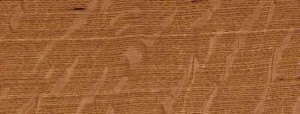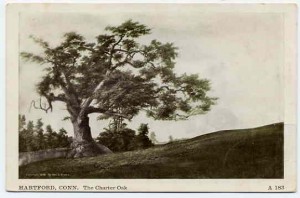Trade Name: White Oak.
Genus: Quercus alba
Janka Hardness (pounds-force): 1360
Description: Light to medium brown, sometimes sprinkled with pinkish hues. Red Oak is usually a darker red, but color is no way to differentiate the species. The primary difference is on the cellular level. White Oak is a superior exterior performer than Red Oak due to the tyloses providing a closed cellular structure, making it more rot- and water-resistant. White Oak was the preferred species for many of Gustav Stickley’s Arts and Crafts designs at the turn of the previous century.
Location: Typically, Eastern United States.
Common Aliases: Cucharillo, Encino, Mamecillo, Roble, Roble Colorado, Stave oak
Performance: White Oak is solid, durable, relatively easy to work, well pored, and coarsely grained. White Oak finishes very well. It is affordable, abundant, and can offer a wide array of appearances, depending on what the designer has in mind, and depending on the particular cut of the lumber. Insects such as ambrosia and Butrespid beetles will get right after this species, sadly.
Common Uses: Staves, barrel making, boat building, outdoor furnishings, cabinetry, tables, chairs, craftsman designs, flooring, moldings, millwork, veneer, and a variety of other uses.
From: The Wood Database
Common Name(s): White Oak
Scientific Name: Quercus alba
Distribution: Eastern United States
Tree Size: 65-85 ft (20-25 m) tall, 3-4 ft (1-1.2 m) trunk diameter
Average Dried Weight: 50 lbs/ft3 (805 kg/m3)
Basic Specific Gravity: .60
Hardness: 1,360 lbf (6,000 N)
Rupture Strength: 15,200 lbf/in2 (104,800 kPa)
Elastic Strength: 1,780,000 lbf/in2 (12,300 MPa)
Crushing Strength: 7,440 lbf/in2 (51.3 MPa)
Shrinkage: Radial: 5.6%, Tangential: 10.5%, Volumetric: 16.3%, T/R Ratio: 1.9

